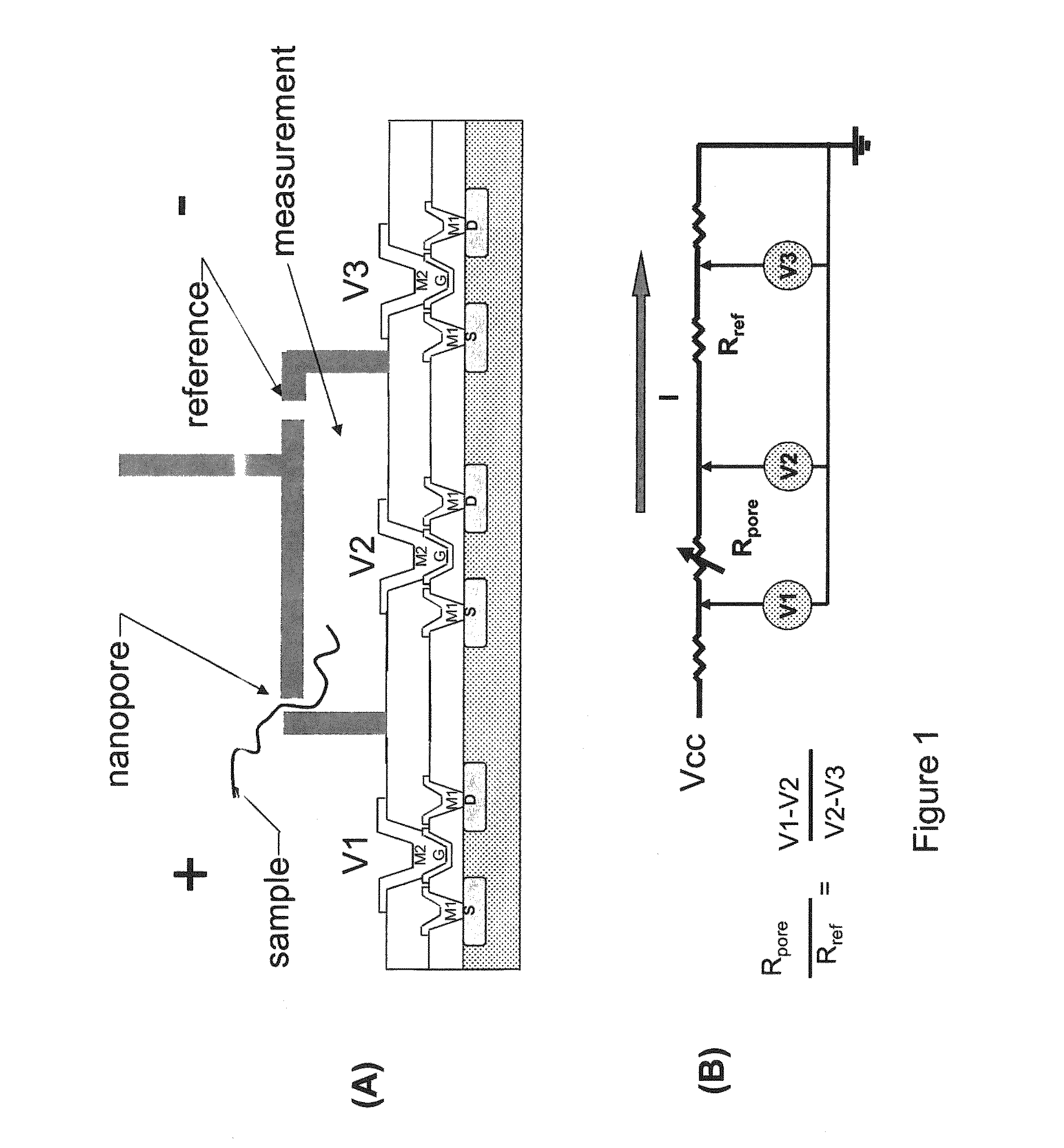Nanopore sequencing using charge blockade labels
a charge blockade and nanopore technology, applied in the direction of isotope separation, diaphragms, electrolysis, etc., can solve the problem that the devices using nanopores to sequence dna and rna molecules have generally not been able to read sequence at single-nucleotide resolution, and achieve different elastic modulus properties and net charges at different levels
- Summary
- Abstract
- Description
- Claims
- Application Information
AI Technical Summary
Benefits of technology
Problems solved by technology
Method used
Image
Examples
examples
Sequencing Using Blockade Labels
[0260]Into a microfluidic chip having a thin silicon nitride substrate having a hole about 100 nm in diameter is introduced a lipid bilayer membrane that spans the hole in the microfluidic chip, as described, for example in Reimhult, et al., Trends in Biotechnology, 26(2), 82-89, 2008. Above and below the membrane are disposed drive electrodes to provide a voltage drop across the membrane. A separate set of electrodes is provided above and below the membrane for measuring the resistance / current flow through the membrane. Into the membrane is introduced a modified alpha hemolysin pore having alkyne groups coupled to the portions of the pore extending into the solution. The alpha hemolysin pore is added at a concentration in which on average, one pore is added to the membrane. The presence of the pore in the membrane is determined using conductance measurements with the measuring electrodes. Into the top chamber of the microfluidic chip is added a solut...
PUM
| Property | Measurement | Unit |
|---|---|---|
| channel length | aaaaa | aaaaa |
| length | aaaaa | aaaaa |
| diameter | aaaaa | aaaaa |
Abstract
Description
Claims
Application Information
 Login to View More
Login to View More - R&D
- Intellectual Property
- Life Sciences
- Materials
- Tech Scout
- Unparalleled Data Quality
- Higher Quality Content
- 60% Fewer Hallucinations
Browse by: Latest US Patents, China's latest patents, Technical Efficacy Thesaurus, Application Domain, Technology Topic, Popular Technical Reports.
© 2025 PatSnap. All rights reserved.Legal|Privacy policy|Modern Slavery Act Transparency Statement|Sitemap|About US| Contact US: help@patsnap.com



